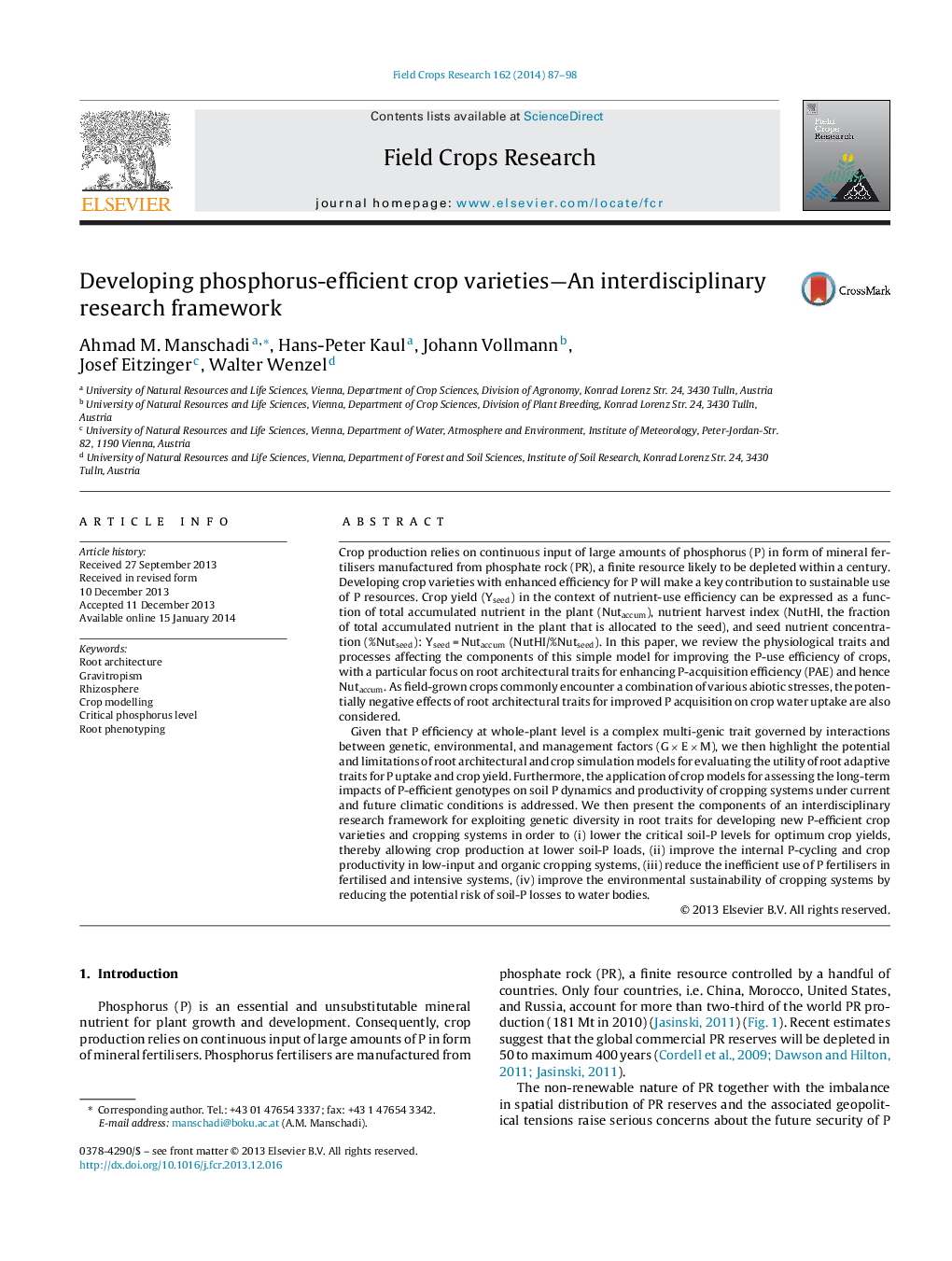| کد مقاله | کد نشریه | سال انتشار | مقاله انگلیسی | نسخه تمام متن |
|---|---|---|---|---|
| 4510052 | 1624701 | 2014 | 12 صفحه PDF | دانلود رایگان |
• We present a mathematical–physiological approach for analysing the components of nutrient-use efficiency in crop plants.
• We review the physiological traits and processes associated with phosphorus (P)-use efficiency.
• Root architectural traits for improved P acquisition may incur trade-offs for the uptake of other soil resources.
• Simulation models are crucial for trait phenotyping and quantifying the impacts of P-efficient varieties on soil P dynamics.
• We outline the key components of an interdisciplinary research framework for developing P-efficient crop varieties.
Crop production relies on continuous input of large amounts of phosphorus (P) in form of mineral fertilisers manufactured from phosphate rock (PR), a finite resource likely to be depleted within a century. Developing crop varieties with enhanced efficiency for P will make a key contribution to sustainable use of P resources. Crop yield (Yseed) in the context of nutrient-use efficiency can be expressed as a function of total accumulated nutrient in the plant (Nutaccum), nutrient harvest index (NutHI, the fraction of total accumulated nutrient in the plant that is allocated to the seed), and seed nutrient concentration (%Nutseed): Yseed = Nutaccum (NutHI/%Nutseed). In this paper, we review the physiological traits and processes affecting the components of this simple model for improving the P-use efficiency of crops, with a particular focus on root architectural traits for enhancing P-acquisition efficiency (PAE) and hence Nutaccum. As field-grown crops commonly encounter a combination of various abiotic stresses, the potentially negative effects of root architectural traits for improved P acquisition on crop water uptake are also considered.Given that P efficiency at whole-plant level is a complex multi-genic trait governed by interactions between genetic, environmental, and management factors (G × E × M), we then highlight the potential and limitations of root architectural and crop simulation models for evaluating the utility of root adaptive traits for P uptake and crop yield. Furthermore, the application of crop models for assessing the long-term impacts of P-efficient genotypes on soil P dynamics and productivity of cropping systems under current and future climatic conditions is addressed. We then present the components of an interdisciplinary research framework for exploiting genetic diversity in root traits for developing new P-efficient crop varieties and cropping systems in order to (i) lower the critical soil-P levels for optimum crop yields, thereby allowing crop production at lower soil-P loads, (ii) improve the internal P-cycling and crop productivity in low-input and organic cropping systems, (iii) reduce the inefficient use of P fertilisers in fertilised and intensive systems, (iv) improve the environmental sustainability of cropping systems by reducing the potential risk of soil-P losses to water bodies.
Journal: Field Crops Research - Volume 162, June 2014, Pages 87–98
